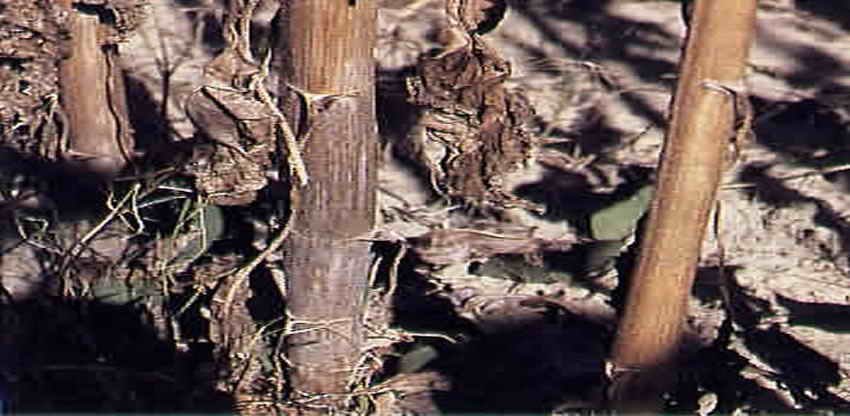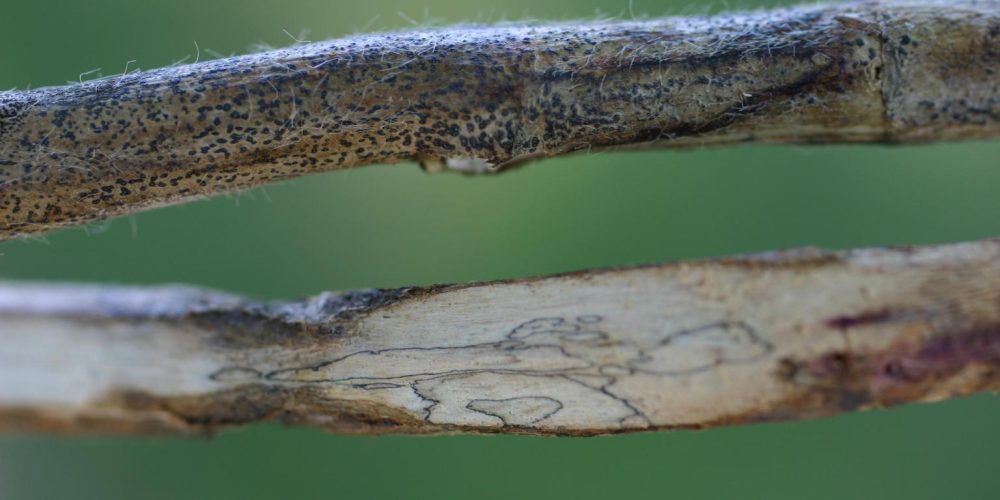Table of contents of the article
ToggleSesame coal rot disease is a fungal disease that affects the Sesame plant, which negatively affects plant health and productivity. And in this article on your site botanist WORLD of PLANTS, we will dwell on the causes of this disease, its symptoms and methods of effective control.
Definition of coal rot disease in sesame
Charcoal rot disease is considered one of the most important and dangerous diseases that affect sesame under Egyptian soil conditions at present, especially in the provinces of the tribal face, and this disease is characterized by its wide range of hosts, as it affects the roots and bases of stems of more than 500 plant species and its danger increases in hot and dry areas and when plants are exposed to harsh conditions such as severe water shortage. The danger of this disease lies in the early infection of the roots of young seedlings with the formation of the first foliar Leaf, but the symptoms do not unfold until 45-50 after planting, as the infection appears and develops starting from the flowering and fruiting period, as this leads to the death of plants and the lack of seed yield and the oil content of a large quantitative and qualitative shortage.
The causative pathogen of coal rot disease in sesame
This disease is caused by the fungus Macrophomina phaseolina, and this fungus has two types of reproductive structures, namely small stone bodies microsclerotia, which is the most recent stage of infection, and the other stage is the pycnid vessels that contain pycnid spores, which is the least recent stage of infection and is formed under natural conditions except under special conditions .
Fungal species that form only stone bodies and do not form vessels and mycelial spores are called Sclerotium bataticola fungus .
Pathological symptoms Symptoms of coal rot disease in sesame
The symptoms of the disease appear in the form of black rot of the roots and then extend to the stem, where they appear in the form of discoloration of the STEM at the point of contact with the soil with the root in black or charcoal, and infection with this disease leads to easy removal of the outer shell of the root and stem, where black dots are seen below the stone bodies (sclerotia) of the fungus .
In the case of conditions predisposing to infection, such as high temperature and severe soil dryness as a result of soil thirst, lack or complete prevention of watering and the entry of plants into the flowering stage and the formation of pods, as these conditions increase the virulence of the fungus and its formation of stone bodies, where the injury extends to the top of the stem For plants where infected plants turn to charcoal color as a result of the formation of black stone bodies characteristic of the fungus on the roots, stems and infected horns, and the disease eventually leads to the drying of infected plants and the ease of breaking and eventually death.
In addition to producing infected seeds that transmit the infection in the next season when planted (by 5-7%), the affected plants are also characterized by being early maturing compared to healthy plants, as they rush to form seeds to preserve their type .
Favorable conditions for the emergence and spread of coal rot disease in sesame
The drying of the soil is the result of a lack orprevention of irrigation (thirst), as these conditions increase the virulence of the fungus and its formation of stone bodies, in addition to high temperature, as well as watering plants at noon, excessive nitrogen fertilization, delays in planting and planting varieties sensitive to infection are also conditions predisposing to this disease .
Disease control resistance of coal rot disease in sesame
- Cultivation of resistant varieties such as the shandwell variety (3) and the energy variety (2).
- Early planting of the Sesame crop ( mid-April to late May) significantly reduces the infection .
- Disposal of the remains of plants affected by burning outside the field .
- Regularity in watering and not thirsty plants for a long time, especially during the flowering period, the formation of pods, as well as not stopping watering long before harvest (preferably from7-10 days). Planting earlier winter crops reduces the incidence of infestation such as planting onions, garlic, flax, barley.
- The cultivation of intact poisons is injury-free and taken from reliable places .
- Treatment of vaccines before planting with one of the fungicidal disinfectants for the seed such as rhizolex-t at a rate of 3 g/kg seed with the use of gum arabic concentration of 5% as an adhesive at least 24-48 hours before planting .
- Treatment of seeds before planting with an effective and safe alternative to pesticides to reduce and rationalize the use of pesticides, such as soaking seeds in garlic and rhubarb extracts or one of the resistance-stimulating substances such as salicylic acid (aspirin) or butyric acid indole .
- In case of severe infection or planting in the land that is predisposed to the disease, the infected soil is treated with one of the recommended fungal disinfectants as a soil treatment such as rhizolex t at a rate of 2 kg / acre or chlorothocybe at a rate of 5 kg / acre after mixing with an appropriate amount of soil to facilitate its distribution, then scraping is added on the lines Previously mentioned
In conclusion, we would like to note that we, at the world of plants website, offer you all the necessary services in the world of plants, we provide all farmers and those interested in plants with three main services::-
- Artificial intelligence consulting service to help you identify diseases that affect plants and how to deal with them.
- Blog about plants, plant diseases and care of various crops ... You are currently browsing one of her articles right now.
- An application that provides agricultural consultations to clients, as well as a service for imaging diseases and knowing their treatment for free – Click to download the Android version from Google Play Store، Click to download the IOS version from the Apple App Store.
References





